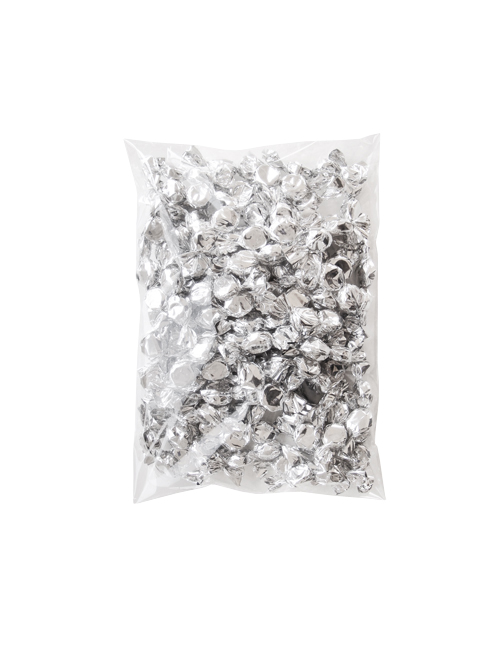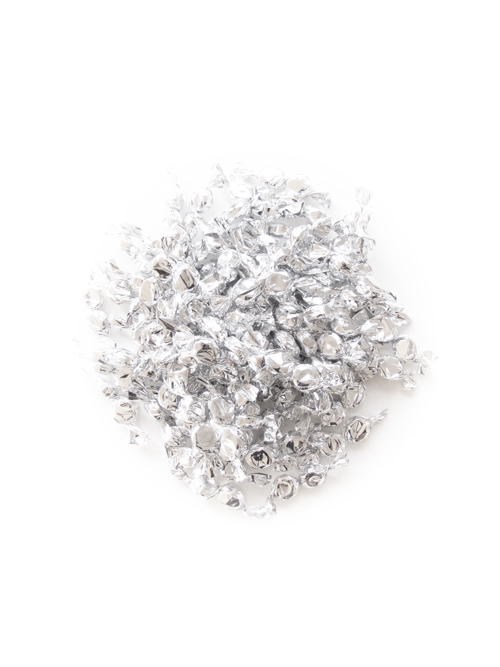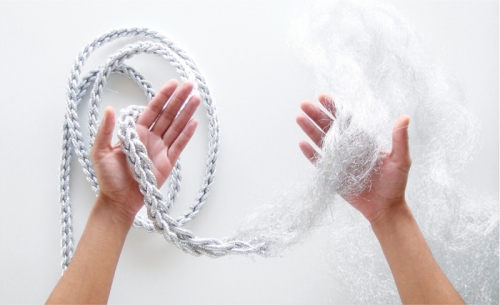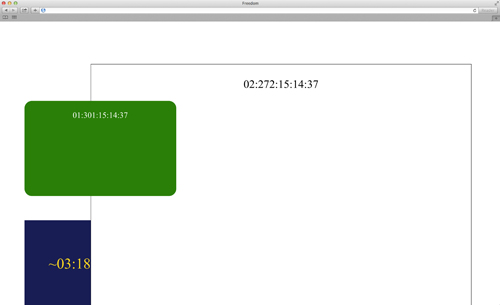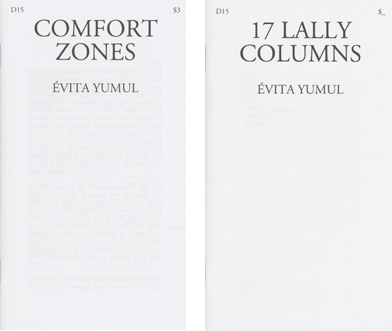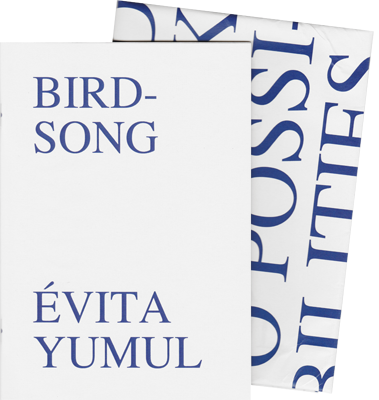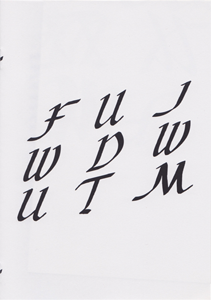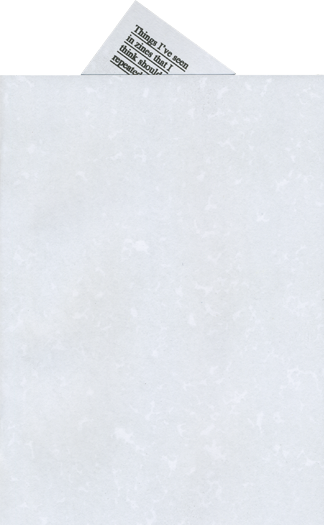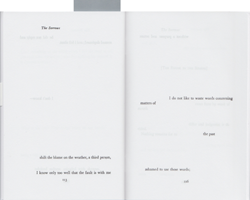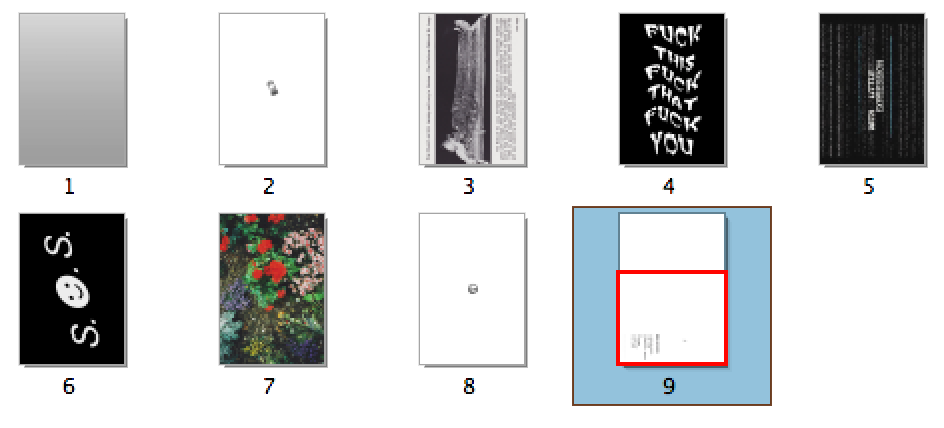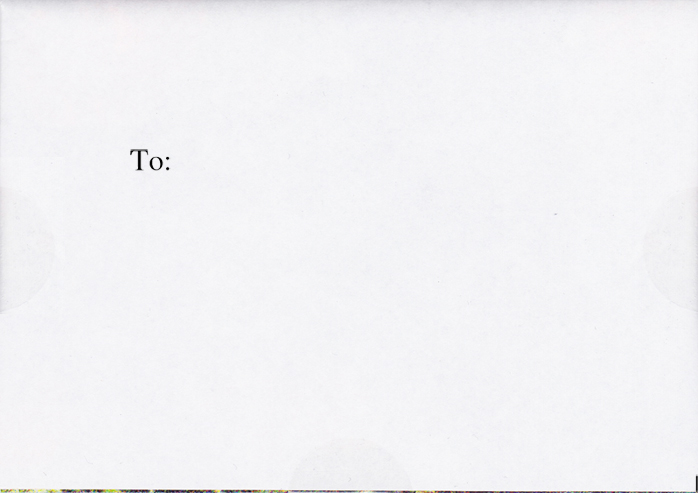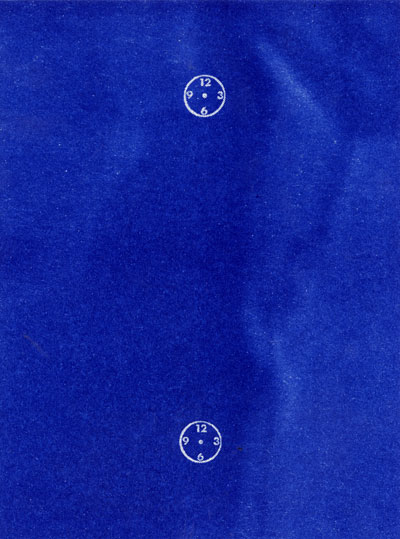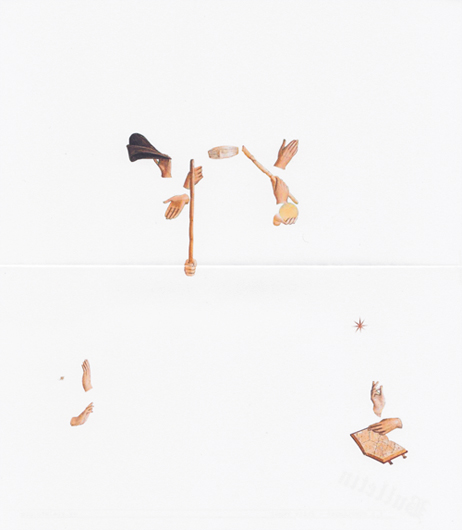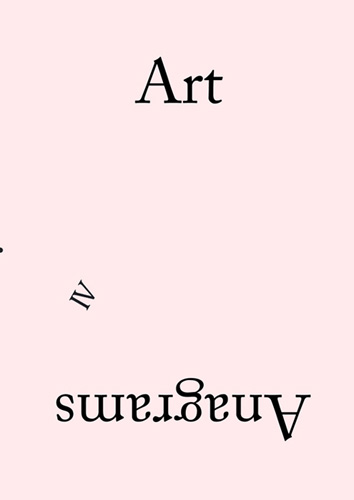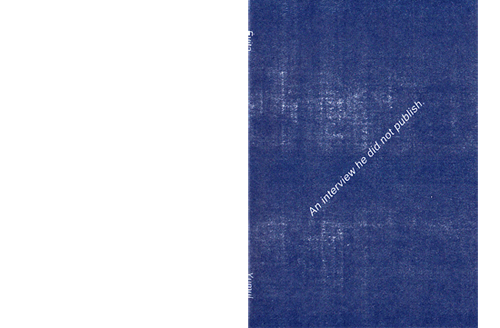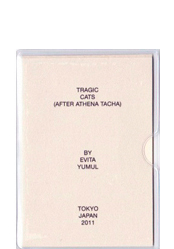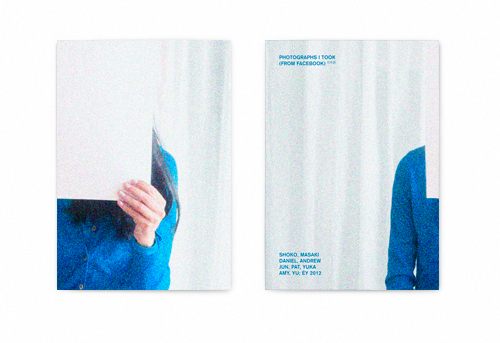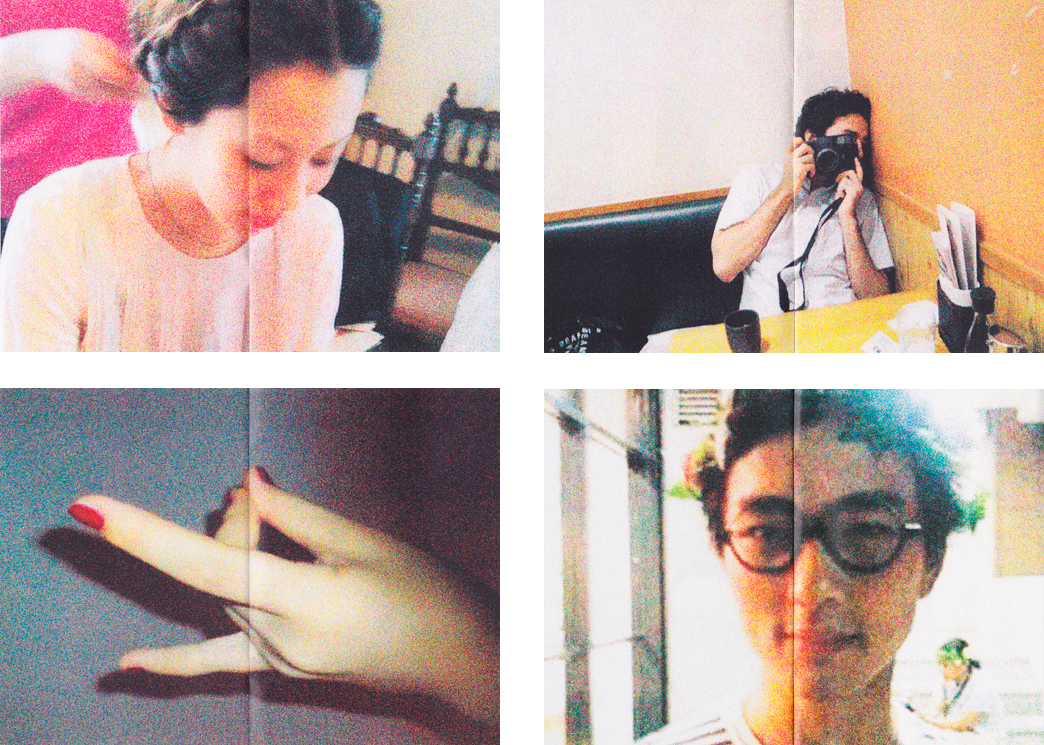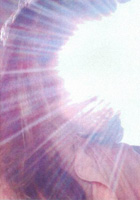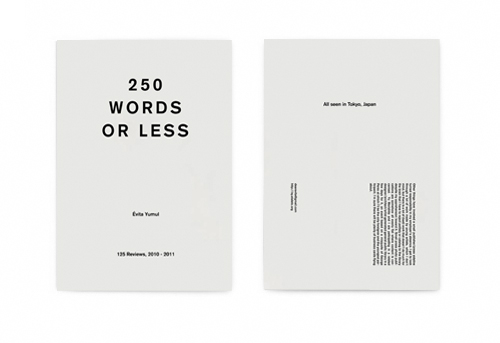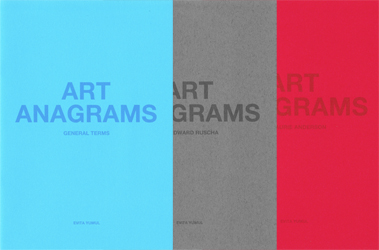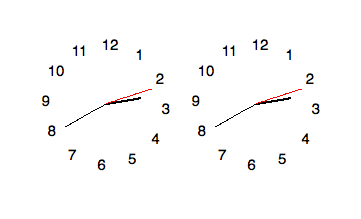Peter Eleey: Hello, um, good afternoon and welcome to the Walker. I-I'm Peter Eeley and I've organized the show
The Quick and the Dead upstairs in Galleries four, five and six which includes Sturtevant's Beuys
Fat Chair from 1979, which I hope you all will have a chance to see if you haven't already. Uh, just a brief word of introduction, we're very pleased to welcome Sturtevant here today from Paris, uh. Since 1964 a good twenty years before the American art world of the 1980s was consumed by strategies of appropriation, Sturtevant has used some of the most iconic artwork of her generation as a source and catalyst for exploring the concepts of origin and authenticity, including those by Warhol, Felix Gonzalez-Torres, Frank Stella, Jasper Johns, Marcel Duchamp and of course Joseph Beuys. She performs her sources rather than borrowing them wholesale, and uses the same materials and uses the same materials and conceptual tools as the artwork she repeats, but her pieces are never copies, in fact, she defies the end game of reproduction and and simulation that has come to characterize contemporary society. The brutal truth of the work, she has said, is that it is not a copy. The push and shove of the work is the leap from image to concept. And today she'll discuss the philosophical base of this radical work. And as she describes to me the imposition of our cybernetic world, and the zip zap of our digital world, with it's dangerous, potent power --
Sturtevant: Very good.
PE: please join me in welcoming Sturtevant.
S: Very nice Peter, thank you. Is my mic working -- yes -- that was very nice.Uhm, so today I'm going to, I'm going to overload you a little bit, I think. I'm going to start out with two interviews, uh, one of which was made while I was at MIT and one of which was made for Frieze. And, I think that will give you a ground to start with, and, um, how many of you know my work?
S: Uh, okay, (be)cause it makes, it makes a difference you know, thank you. Uhm, so, after the interviews I'm going to read an essay called Modes of Thought, and uh, then we're going to have a slide show (laughs), which is totally medieval.
S: And, uh, which is called The Transgression of Our Visual Desire. And, uh, what I would like to point out is that this is, a uhm, this essay Modes of Thought is-was, was written quite some time ago. And also the interviews, the one from MIT was done in ah mm 2000, something like that. So although I think it's very good in terms of a base, i(t')s not really what my present concerns are about. But, uh, okay, so let's, uh, Peter's gonna be kind enough, uh, to read -- he's gonna pretend he's the interviewer and
PE: mutters ? into mic
S: I'm gonna pretend I'm the artist.
. . .
PE: I first came across your work in a catalog of your drawing show at the Bess Cutler gallery, New York City. It was extraordinary because it looked like the work was talking about simulacra, yet when I looked into it I realized that it dated from the 60s. That seemed extraordinary and extreme at the same time.
S: Well, basically what was around at that time was the last ember -- embers -- of Abstract Expressionist and the hard blow of Pop both given by surface of involvement and pushed my to thinking about the understructure of art. The silent power of art, long term thinking with philosophical grounding.
PE: What would that('ve) philosophy (ha)ve been?
S: Oh God. Hegel, Kant, Nietzsche, heavy, heavy Nietzsche,
even those funny guys Spinoza and Schopenhauer?
PE: What about Deleuze and Foucault, both are used to support your work?
S: That was later, much later. Such monumental minds (coughs), especially Foucault and then the wonderful playfulness of Deleuze.
PE: Well it must have been scary because you were exhibiting artists at the same time that they were exhibiting. It must have been scary for you and the artists, too. How was it perceived at the time?
S: A lot of negative, some positive, the negative was about the market, that sort of nonsense.
PE: Well it was good marketing.
S: Oh, yes it was making Warhols to sell. Warhols? Very stupid. The supposed positive was that I was making 'mega-pop.'
(coughs) Excuse me. (drinks water) Have this (ho) habit recently of coughing, so you'll have to put up with this maybe. Let's see if we can stop it. (cough drop) Now let's see if I can try to talk with something in my mouth.
Okay, let's see whu-where were we (mutters). What. Where
PE: You were making mega-pop.
S: Mega-pop, mega-pop (mutters points mutters)
PE: Right there
S: Oh. Superceedeing Warhol, that made it even worse. Deleuze of course -- Dealers, of course, were freaking out of their minds because the work was very powerful.
PE: I wonder if I'm missing a page...
S: Oh, I hope not. No, it goes on, I'm just taking a long pause here.
PE: Oh, okay.
S: On the top, on the top of seeing, the Stellas appeared as Stellas and the Johns looked like Johns. This was enormously threatening for them. It created many problems, but that's an understatement.
PE: When all that simulation theory came out in the 80s, did that effect your relationship to that work?
S: No, of course not, but it helped some people to gain access, a (dis?) hinge to my work.
PE: How do you relate to the work of Sherry Levine?
S: Well, she is definitely somewhere else. And different issues and concerns. The appropriationists were very crucial to the forward movement of my work. But this is old history and Sherry Levine is great.
PE: Your work is about parameters, the parameters of art practice, parameters of art making.
S: Uh, those perpetual questions of originality --- certainly now a myth --- and the dynamic relationship of origins to original and man's anguish with retrieving origins. But this is neither here nor there, for we are now locked into devastating and dangerous modes of being.
PE: When I show people your work, they always hint at a sort of madness in their response.
S: A kind of madness -- that's great -- I like that. Certainly thinking is a kind of madness.
PE: The art of repetition: how does that shift the relationship to the art object?
S: The object is transposed by this repetition and then pushes a reversal of thinking of kind of standing on your head you can reject but it sits in your head like a bad buzz. You see, it's not the object in itself, but rather what, what occurs. That radical leap from image to concept, repetition distancing the work from the source, and at the same time elaborating upon it changing both the past and the future in a very dynamic way.
PE: Have you ever made a piece of work which you might do this act of repetition but might not end up as being an art object?
S: Oh, but definitely, yes. Language is double.
PE: What about your recent videos?
S: Uhm, well --- you see how old this is because -- the show was a long time ago. The last show at Ropac, the Dillinger Running Series was an attempt to push articulation against visibilities. The Greening to -- Greening of America in the reversal sense, of course, is a seven-frame discourse on excess, imitation, transgression, and exhaustion. And currently I'm working on The Dark Threat of Absence, a film for my Paris show in June, that's talking about the vast, barren interior of men.
PE: What kind of visbilities are you talking about?
S: Mostly about the torturous elements of (shifting/stiffening?) mental structures, visibility as an interior structure as opposed to visible.
PE: And how are they embedded in our thinking?
S: Mm, exactly (? ?) -- I don't know why I said exactly(? laughs) -- impending modes of thinking that control, restrict, chew up liberty and freedom with a base of falsity that has created a burning desire to death, killing, and for (all) those who retain a soul, the silent, solar inversion of (satanic?) desire, a violent desire to die more than to live.
PE: Ultimately, quite a pessimistic outlook ...
ES Mm, not at all. It is what it is
PE: Are there any redeeming factors within technological development?
S: Mm, absolutely, if we weren't so sloppy with it.
PE:How do you see progress from this point of view?
S: Mm, progress is a slippe(r)y word and now blatant in its attempts to deprive man of all substance: the vigor of life, the vitality of food, the function of labor, the action of words. It's endless.
PE: Your viewpoints must be fairly unpopular in America.
S: (laughs) I've been unpopular so long it hardly even phases me. Besides, popularity is rather lumpy concept, no?
But how I do long for man knowing his full power with dreams and hopes for self, others and the Other.
PE: Chirac seems to be surviving remarkably well even though he is a pretty shady character.
S: What is going on here? Bush, Regan, Nixon; they are all gangsters. And Bush not only cheats and lies, but along with Sharon, has set in motion volcanic proportions of hate and despair. A true raping of the mind.
PE: Tell me why you moved to Paris.
S: You trying to change the subject? New York City was absolutely without discourse, art was consumed with subjectivity, a few (?) like that, but I always went to Paris from time to time, a way not to get glued to your own focus. Then again, wanted to make the Keifer Planes for my Kunstformen show and shipping that heavy lead plane would be something else again.
PE: The 80s was a significant return to the old orders of the establishment, it was a reconstitution of the old Avant-Garde.
S: Really? Avante-Garde, definitely medieval.
PS Do you get more discourse on your work in Europe?
S: (Marginally?) (.... ?) but I think LA, I think New York City and LA are coming to grips. (laughs)
PE: Isn't that lack of confrontation an American mannerism where everything has to be affirmed?
ES Ah, strongly, and that is bad news.
PE: Well to tie this up, what about these hierarchies you talk about?
S: Yes the wonderful power of cybernetics' inversion of image over object, finite over infinite, man is God, Self is disappearance, origin as image, truth as falsity -- there we go.
PE: And here we go.
. . .
S: Thank you, Peter. (...) Great.
Now we're going to ask someone whom I think you all know, Philip Verne, to come up here and do the Frieze interview. Phi-leep? Hello Philip.
Nice to have you here.
PV Nice to have you here.
S: Okay, so this was in Frieze magazine, it's very short, but I think it gives you another idea, okay.
PV So. What images keep you company in the space where you work?
S: The outside of the inside.
PV What was the first piece of art that really mattered to you?
S: I don’t think it was art.
PV Sorry. If you could live with any one piece of art what would it be?
S: Oh, Impossible.
PV What film has most influenced you?
S: Any film of Quentin Tarantino because he is a concrete example of the vast barren interior of man: a big-time cyber jerk.
PV What is your favorite title of an art work?
S: Oh, Can’t be bothered with this. Why put your head into this? I can’t get there from here.
PV What do you wish you knew?
S: Everything (almost).
PV What should change?
S: Uh, hate, violence; our hot desire for death.
PV What should stay the same?
S: Definitely not the 'same’.
PV What could you imagine doing if you didn’t do what you do?
S: Raising a lot more hell.
PV What music are you listening to?
S: Notorious BIG
PV What are you reading?
S: Hm. Michael Jackson Was My Lover
PV Mine, too.
S: This Michael Jackson Was My Lover was really astounding book, I have to tell you. It's a-uh, super reality of truth as falsity; and always in-between, Gilles Deleuze and Michel Foucault to prevent brain damage.
PV What do you like the look of?
S: John Waters, Udo Kittelman, L. Muzzey. We could include you Philip.
You don't look bad either.
PV Thank you, always loved you.
What is art for?
S: What's it (?), oh, Current art is, is uh: to dangerously re-load, to fill a hole, to conceal the loss of power. That's it. Thank you Philip.
. . .
S: What mic is doing that?
PE: I don't know, might be this one.
ES Is it mine, no.
PE: (mutters) When Sturtevant's done talking, we'll open the floor for questions, but I just ask that people wait and speak into the mic, so that everyone can hear.
PE: walks off stage.
S: Okay, so this lecture is called Modes of Thought, uhm, we tried to uhm, yeah, that's Plato's Idea same Idea -- Why are we running this now? I have no idea. What we have to do is, I tied to put this on, um, on the, uh, Powerpoint and as I talk about different shows, uhm, then the images are supposed to come up, so you just have to wing it a little bit, okay? (clears throat)
Modes of Thought. Repetition. Repetition is displaced difference. Repetition is pushing the (?) of resemblance. Repetition is interior movement. Repetition is (?) representation.
The Fold. The fold of the interior without the exterior is a vast, barren, interior man. I'm talking about Foucault and Deleuze's Fold. Plato's Dual Action of Idea -- weh it doesn't look like Plato, does it -- Okay, so now this is running now on the show, so we'll just go through it, okay?
Plato's Dual Action of Idea is now the perpetual convolution of seeing. These are modes of thought that reflect the depth and width of the work, but perhaps do not give zip-zap, nor do flat, heavy questions concerning the work that result in murky waters, interfering information that pulls further away from understanding. But understanding is not the role of knowledge. Rather, knowledge is made for cutting. This is indeed my premise. There is a need for thinking, that great all-time high. There's a need for pure distance. Uh, the (plural/brutal?) truth is that this work is not copy, not only by intention in meaning, but also by interior structure.
To think copy in relation to the work is to render it impugnment. Today of course, everything is double, copy, re-do, re-done, reload. However, to go beyond the surface of art, to probe the understructure, the silent power of art, demands utilizing representation, duality, to drastically reverse content. Thus, when content no longer refers to the visible, there is the radical leap from image to concept.
From exterior to interior. With this, paradoxical and antagonistic method of resemblance, but not in itself resemblance, the source works are vigorously emptied, and they are able to fulfill their role as catalysts. The essential, insistent murmur of resemblance and that of identity are there, but transformed. The force, this force, as you use to push and impel thinking in gender polemics, to resist, to give visible action to dialectics, and open wide space for new thinking. Implicit in conceptual thinking is forward movement that develops further of initial thinking. And so the current work demands the action and sound of film, so I'm talking about when I first started to go into film, so, that's a great running dog. That's from a video called Infinite Exhaustion.
To backtrack. The early work was concerned with making visible the concealed, to move away from the surface of objects, to the understructure. Thus, the following shows contain the same dynamics but with different focus. The show Powerful Reversals, which was not anywhere near that, (pause) uhm, (long pause) so, okay,
I think we just, I think I just had to give this up here. Ah, the show Powerful Reversals presented objects that were used to demonstrate art's move from the interior to the exterior. This is art's crucial shift to subjectivity without transcendence. Sports is, is art. Ça Va Aller encompassed the changing parameters of art, a desperate move, not to divest itself by siezing any and all fields, an entrenchment that hides arts loss of power. This is to fill a hole. Interior/Exterior Visibilities was a photographic show that attempted to remove "seeing" by distancing the object, to void the power to see. This is to reveal. Recent video con -- Recent videos contain a dynamic difference with a displacement of concept over image. The image over image. It no longer lies on the surface but is the surface itself. A hard ball way to make thought visible, resemblance is no longer the ruling power, but (with) repetition placing its force in movement, light and spaces.
And so, the one just before that was the Dillinger Running Series, I don't know how many images we have on that. Uhm (clears throat), the Dillinger Running Series, an essential leap to video, that brought, full force, the conceptual idea that thought could be made visible by action. A step to the broader dimension of articulating visibilities. A work that contains extrinsic movement, imposing on intrinsic, (be)cause it was a video that moved around the gallery and it's me running, and so, well nevermind... Extrinsic movement imposing on intrinsic movement, immediacy bound to distance, exclusion fraught with inclusion -- here is space running. The diagonal line, the architectural light, the dark fold. This is the power of thought. The Dark Threat of Absence Fragmented & Sliced is a a floor installation of seven videos--why are we stuck on this? Are we stuck on this? This is Dillinger. Okay.
The Dark Threat of Absence Fragmented & Sliced that constructs an agitated imbalance that is stuck and glued by transgression. The tight play between screens shows and makes sound an object of language, non action with time image, and movement, thought. In turn, it is also a jolting thrust forward to dislocate sovereignizing, pervasive strangulation on our modes of thought?
Cybernetics Rigid Loop, with its suffocating boundaries of limitation, excess, transgression, exhaustion, has created potent shifting mental structures by the reversal of hierarchies. Image or object, finite over infinite, information is knowledge, our truth is falsity, space is object is our place. Such reversals are fraught with dangers, creating interior jet-speed frisson that gives higher power to hate, violence, killing, greed, stupidity, absence. This is our cyberfold of our digital, paternal return.
We're going to go now into the Transgression of Visual Desire, which uhm, let's see, what do we have to say about that? Oh, it's because the images are not very bright or very good because there's too much distance between, so, I guess you just have to tolerate that. Okay. Mm, kay. Original sin is not -- this is Transgression of our Visual Desire -- Original Sin is not, is not original, but it most certainly is original sex. Sex is with Duchamp, is no longer viable. Sex no longer creates pleasure, sex is no longer crucial for creation. It's higher power rests in violence, killing, death, and into the vast barren interior of man. An absolute death of infinite absence that is a frisson gone bad. The falsity of sex jumps and jitters as in things. Art, of course, can be sexy -- uh, let's see I think I have something there (pause), this is a frisson gone bad.
Art of course can be sexy, the penis is a toy, ketchup is sex, ketchup noise is sex, white teeth are sex, shipping carts are concealed, controlled sex, painting is sex, big is definitive sex, a million watchers is a wet dream come true, money is sex, music is raw sex, sports are sex, Mickey Mouse is funny sex, interior visibilities are sex, insolence is nasty sex, sucked out content is sex, psyche replacement is dangerous sex, damage to the soul is sex, demise of the binary system is sex. Body parts are always a big winner. Even if in ads, green lips, or big breasts.
Truth most certainly is not sex.
But then again, falsity is hasty sex. Around or beyond things are the shabby inversions of satanic denial. Pulsating to, pulsating desire. Sex without mess, sex rampant with greed, fear, rave, rage, hate, pain, (laughs) stupidity. Sex is content, killing is content, death is content, food is content. This then is our visual desire of transgression.
So, I would just like to add -- That's it, basically. I would like to add, that, uhm, this really doesn't represent my current concerns. Um, Um, I'm very much now into the higher power of simulacra, and its disaster invasion, and it's, uh, terrifying power. But, I'm not gonna talk about that because that's a whole (n)other lecture. But this is what we should really be concerned about today.
So, we're going to open it up to questions, I hope there are questions ... (laughs) Okay.
. . .
Ah(l)et's see, I always try to think of a question to give people courage. One time someone asked a question and I gave the woman such a hard answer that it was (laughing) everyone was terrified to ask another question, so we don't want to do that. Let's see ... There must be some questions, huh. We have a question here from somebody down in the front row. (laughs)
Q When you say that you're talking about, um, your current interests focusing on the dangers of simulation -- simulacra
ES simulacra
Q are you talking about, are you thinking about, um, things that our government is doing, are you thinking about war, are you thinking about entertainment
S: No.
Q no
S: No, no, none of those things Peter
Q Can you elaborate and clarify?
S: (laughs) Could I clarify, probably NOT.
Q No, no, that's the wrong question, nevermind.
S: No, when I'm talking about simulacra, I'm talking about it's how it's impositions on the art world and how, for instance, I I'm currently writing an essay and I'm trying to write it without using the artist's name and it's a bit difficult. But, um, there is, um, there is a current artist who is very much totally into selling who does really beautiful work but if you spend any time looking at it, it's very hollow. And instead of being different, the same is difference, it's same as same. So really it comes down to, it really sucks itself right into simulacra and simulacra of course is really just, I really think that we -- how can I say this -- I really think that if there are not some really good reversals in the way we think, if we do not pull ourselves away from cybernetics which I really don't think is possible, this, this, simulacra will become the most, the most important thing that we're involved with. And that relates back to (clears throat) how many is empty, and hollow. Yeah. If you don't use -- do any of you, do any of you read Foucault or Deleuze?
I hear a big roaring YES. (laughs)
Foucault and Deleuze are very interesting and Foucault particularly because he is a big challenge, and, um, they talk about the fold, so, uh, you have an interior and you have an exterior. And the exterior has to come to the interior and the interior to the exterior, but where we are now, everything is exter, exterior, so you have no, you have no references, you have no parameters, you have only the outside as your structure. That's not good.
That clarify things?
Q Is it just because it's false?
S: No, simulacra is not false. Oh no, no, this is why it's in higher power now, it is definitely not false. Simulacra is a very big number. And it's definitely not false. Yeah m. So it's changed, it's because it used to be considered false. But it's changed. It's no longer about model or anything like that. And it definitely is really, yeah, Okay.
Q What is it, replacing something that we need (... ?)
S: Well, you know someone said to me one time, "What do you want us to think?" and I said I don't want you to think anything, okay? I don't want to tell you what to think. I think it's basically what it comes to is there has to be some kind of ability to think, to reflect, to, to realize what to object, to be rebellious, and I don't mean walking down the street. But not to be trapped in some of this um horrible structures that really you know they suffocate you. Um, I just recently, I used to read, um, I used to read trashy books at he end of the day so I could go to sleep and (uh) now trashy books are not good, they're not good, and novels, if you read any current, most of the current novels, they're not, there's no character definition, there's narrative, but that's about it. They really have no substance, they have no essence. And, um, so no, I can't really tell you what to do. But I think thinking would help. Yeah. Thinking would help. And thinking doesn't mean that you decide to go to the supermarket. (laughs)
Q So when you're talking about the fold, is there, is the presence within the fold, that it's possible? And ...
S: Well, it's not, it's not a tangible thing of course. It's like bringing everything of a, I don't, I really don't know -- it's not tangible. Uh, it's not something you can take hold of. Is that what you're asking me?
Q Um, well just about the darkness that you're referencing, the interior hole, I mean, the, is that where there's some, I don't know, almost like, a positive, something, because you know it almost seems like there's a, it seems like it's very negative, this constantly being on the exterior and all this simulacra, is that where there's the kinda it seems like, uh, the possible positive place with, is it was it is within the darkness or within the fold is what I'm ... wondering .
S: Yeah, well I'm using darkness as a uh, as um, a mode of thinking, not actual darkness. But as you know, that ability to reflect and to mediate, to think, so I'm not actually talking about darkness.
Q I guess that's what I was talking about. Is that where there's some sort of hope or whatever is in that maybe a place for reflection or within that darkness, I guess.
S: Uh, are you talking about hope?
Q Nu-I don't know.
S: I'm sorry.
Q I don't know. I don't know if that's the word.
S: What are you asking me, here?
Q I don't know. I guess I'm curious about that, that darkness seems that there is that kind of possibility for something that isn't there in the simulacra or in the exterior.
S: Or in the what?
Q In the exterior, or in the simulacra. It seems like there's, that's the emptiness that's within the darkness.
S: No, no, this is really ... We should be in a seminar now.
Q Sorry
S: No, that's really, um, no, that's not the way it goes at all, but I don't know how to start, I'm sorry. I really don't know how to start from A to Z to straighten that out a little bit. Um, let's see if I could think of something. I don't think so. You know, when you have, um, when you have something developed conceptually it's very complicated and very complex and so it's very difficult for me to start at the beginning and go forward. But, um, you could read, you could try reading Foucault, Deleuze, and they're very interesting to read and you just don't read it like, you know, read it first and don't try to understand anything and then read it again (pause)
Q Okay, sorry. I guess what's more thinking of Irigaray and
S: I can hardly hear you, are you talking?
Q I'm sorry I keep thinking of Irigaray and the, the, the the Lu-see EE-REE-GAH-RAI, the French, philosopher ...
S: Are you saying (revigorize/figurize?)?
Q Sorry, I guess I'll talk to you after (laughs)
I don't want to waste your time.
S: Yeah, talk to me after. That's a good ending.
Now it's very difficult to, um, to do that and, um, and I think probably my lecture I'm working on for next time goes into that more and clarifies that a bit. But, um, this is also like somebody with a transgression (of a) visual desire said to me: "How come everything isn't about sex? Why is that sex?" (laughs) and of course, it isn't about sex. It's about transgression, it's about desire, and it's about objects. So nothing is you know, head on, like that. You have to make leaps, da da da, and you have to have distance, you (mumbles/need) distance. Does that help you a little bit? Not at all.
Have any other questions?
Q Yeah I have a -- over here. Uh, I'm just gonna ask it. Do you have any physical practices to help you think, to facilitate thinking?
S: Do I have any difficulty what?
Q No, like, physical, things that you do with your body that help you when you're trying to wrestle with an idea or to stimulate your brain.
S: Yeah, I try to sit still (laughs).
Q I mean, really, that's it, you say, I'm going to sit still for an hour today. I just feel very overstimulated by the life that we have right now. Um, and sounds like you're dealing with that, so.
Q I deal with things very physically and I just wanted to know what you would do. Or what you do.
S: What I would do? When I'm doing what? (laughs)
Q It's just that you have
S: I'm not, I'm not sure I understand what you're trying to ask me. What I do when I'm doing
Q When you want to think. What do you do with your body ...
S: Oh, well, you don't, you don't sit down and say, "Okay, now I'm going to think"
Q Mm-hm.
S: It doesn't quite happen that way. No, no. It doesn't happen that way. It, um, if you have. Firstly, any, if the work is totally, and it is all conceptual thinking it develops so you have threads that go through the thinking. But you never sit down and think. You know, you never sit down and say "I'm thinking." If you're doing, if you're doing, um, let's say I'm doing a lecture and, um, so you have, so you have an idea of what you want to say or what you feel should be said and then if you start writing and that develops itself, and if you're talking about more, um, a more profound kind of thinking. That, that comes in long term, you know, that just isn't something you do like that. And so that's in some ways why you talk about light, horizontal light, and space and stuff because, um, when you get something that is, partic -- that really triggers something in your head, it's very, it's very -- gives you a big time high.
Q Can an exhibition like the Qui -- Can an Exhibition like The Quick and the Dead, the one we're here for, is that something that could be an antidote for the negative you see?
S: Um, yeah. Yes, definitely. I think the exhibition is extraordinarily beautiful, I think the museum, this museum is beautiful and people here in Minneapolis are very lucky to have this Museum. Um, I, I think that, um, not only (?) particularly impressive because the museum difficult as a space, extremely difficult as a space, so to install a show is very tricky business. And, uh, it's beautifully installed, it has threads, it brings you through different things, your head goes different places, yeah, definitely.
Anybody else?
Q Hi.
S: Hi.
Q Uh, thinking about the show and your work in the show, I was hoping you wouldn't mind commenting on the Beuys Fat Chair. I was noticing that it had a range of years next to it in terms of the date of the work and I was wondering if that meant the process of making it or thinking about it took a while, or -- And also, you and Peter, how did you guys come to think of that specific work for the show?
S: What was the last question, how did I what?
Q How you and Peter. the curator, came to think about that work for the show.
ES Well, you know that piece was gone -- done -- a long, long time ago, so it's -- it would be difficult to go back and think what the, to identify the thinking process on that. (coughs) Part, part of the installation in which it's a room with a light bulb give the piece a separation and it gives the piece a lot of power as opposed to where it's just sitting. And, uh, do most of you know Beuys's work? Probably, huh. Well in Darmstadt where they have that Fat Chair it's in a glass case, and it's probably a good idea because this is organic material, but, um, so, I think of that piece basically as kind of pulling you back and maybe triggering something. Yeah. Maybe it triggers (fat) hamburgers, I don't know. No, I'm kidding. No, so that there would be a kind of distance, and there would be kind of a, um, um, yeah, distance is a good word. So that it triggers something in your thinking. Okay.
Q Thank you.
S: I have so many people in this audience, you must have more questions. Come on.
Q Do you create to learn what you're thinking?
S: Pardon me?
Q Do you create to learn what you're thinking -- is that part of your process? Because I think a lot of people in this room are having a difficult time articulating the different ideas and creating those maps like you said, in creating those threads. Is part of why you create so that you can learn what you're thinking?
S: Why do I create?! Is that what you're asking me?
Q No I'm asking if you DO it as, as a way of learning and understanding what you're thinking. Or do you create with the direct intent to make external what has gone on previously?
S: Um, no each piece, each piece is done, is, is -- af, after I moved to videos it became very different. But when I was into painting and sculpture, each piece was predominantly trying get people to the silent power of art, the understructure of art. And, um, in terms of, um, video I, um, basically I think the work just has to be considered that hopefully it would build up some kind of, um, thinking, but trigger thinking. Which means, but you know, in, within yourself. For instance, I don't think, um, no, I'm not gonna say that. I think that's basically. I feel that I'm not being very articulate either. So I don't know how I can hep you here. Uh.
Q My question is a little specific and maybe it can provide some thread here. Uh, returning to your mention of Deleuze and Foucault, if one was going to approach a work or two of those thinkers, read in relation to your practice, which of those two would you recommend as a specific pathway?
S: Oh, it's really, it's really not, um, yeah, I wouldn't, I would recommend both. (laughs) Yeah, because, you see, the interesting thing about Deleuze is that he really plays, you know? And so sometimes he plays and it gets really mucked up and it's not very interesting. Fou-Foucault is very, like, he always pulls your head somewhere else. And he not only pulls your head somewhere else, he really does trigger thinking because of the way he writes and the structure he uses for his writing. But then, you know, I came out of, I really did come out of Kant and Hegel and Nietzsche, and so that gives me a very firm structure to work with, which is very different. But I think if you wanted to read them, you know, I really do go back to them all the time, when I'm feeling a little brain dead I go back to Foucault and read him and (mumbles). You, which I think I mentioned, you should, you don't read them to understand them immediately you just read them. And then as you re-read them you start beginning to -- to
Q Well, where would you recommend people to start with the process, which specific texts
S: Pardon me?
Q Which specific texts would you be a great, a good, place to start with that process?
S: Oh, well, oh, I think the, the easiest, which won't be easy, it would be the interviews, Foucault interviews, of which there are several volumes. That would be the easiest to start with because he's more, he's more, into, um, he's more into explaining, okay, or trying to clarify the thinking. So I think taht would be the easiest and the best, yeah. And they're all translated in English, so.
Q I have a question about the different, but related, um, systems of music and art, particularly in art reproduction, often times it's about claiming a territory. In music, reproduction's become normalized as performance, and I'm curious in your early works if there had been an earlier relationship between you an music performing or thinking about music as a text that can be played in which you inhabit the the work, but don't necessarily possess the work. Whereas, well, just go with that.
ES Well, I must say that I am very much into music, you know, I listen to music a lot, but no, it would not be related to, to, directly to the work -- at all. But, um, but then that would be maybe like having a ground of Nietzsche and so forth and so on if you have a very big ground in music then that probably adds something to your dimension, you know, yeah.
Q Are you finding in Paris, uh, there are a group of artists that uh you have an opportunity to meet with and a related question are there any artists in the current exhibit that you have conversed with.
S: Oh, well, uh, the last, I would not answer. In Paris, uh, now I don't really, uh, I don't hang out with artists. So, um, but there are, you know, Parisians are highly intellectual, I mean, the way, I wish I had been brought up in French education. So basically I spend my time with, um, people who are critics or curators or people like that, you know, that are into talking a lot about heavy numbers. Yeah, no, I don't really hang out with artists. No. That answer your question?
Q I lost the mic.
S: You lost the mic.
Q Thank you.
S: Okay, is that it? One more? Okay.
Q Hi, I remember reading an interview, a Warhol interview, where he was being asked about his work, and, um, the question was, can you explain the work, and, um, Warhol said, "I don't know, why don't you ask Elaine?" And I was curious, if you could just comment briefly on your relationship with Andy or, um, just fill us in a little bit on that.
S: I really didn't know Andy very well. I saw Andy. But then I think, I think at some one interview I think I said, "Once you know Andy, there isn't mush more to know." So, but he was, um, uh, Andy was just an absolutely wonderful person and, um, he was also extremely shy, which you know didn't didn't, well, I guess it was pretty obvious too. Um, yes it did, we were standing outside the gallery and this young student was pestering Andy about his process and he says, "Ask Sturtevant," you know. So, but also I tell you, you know, he had a wonderful sense of humor in many ways so one time he, he had a show at Gagosian in New York this was years ago and it was his piss paintings on bronze. So we were standing outside the gallery in New York and he said, "So Elaine, why don't you do one of my, my piss paintings?" And I said, "Andy, I don't have the right equipment." And he said, "Well, uh, Bianca did one." And I said, "Shit, I didn't know she had a prick."
So, everybody laughed, but Andy was deep red. He was so, he was so embarrassed, you know. Yeah, yeah, but I didn't really see him that much, I saw him a few times at the Factory. I saw him mostly when I, I never really sat down, I had him a few times at the house for dinner and, um, but I saw him mostly at parties and big dinners and stuff like that. But he, he was a great guy. He really was. Yeah, we, we're very lucky to have Joe Wax here today, who is head of the Warhol Foundation in New York City. Uh, yeah. So he could probably answer any questions about Warhol.
Yeah. Mm, kay. Is that it?
Okay, thank you very much for coming, huh.
Thank you.
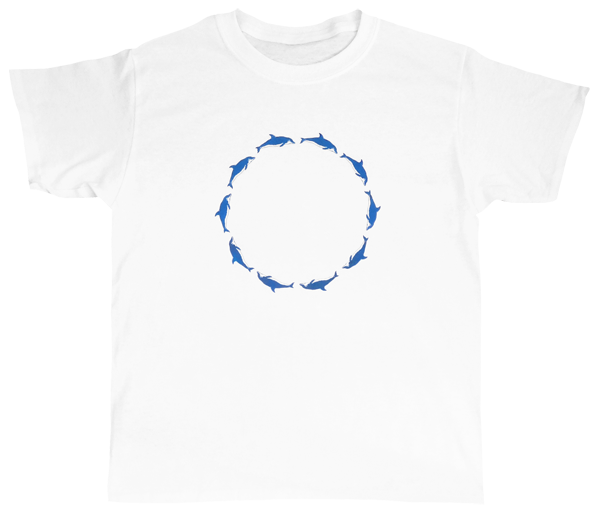

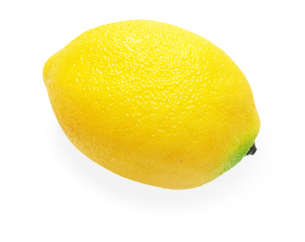

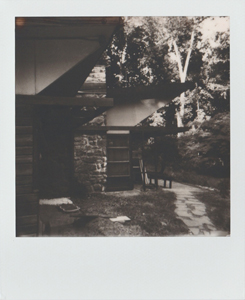

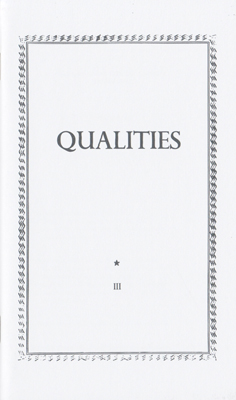
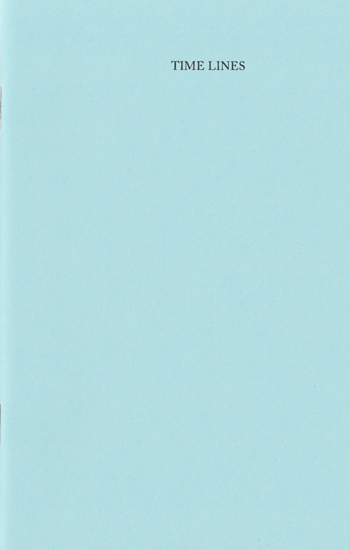
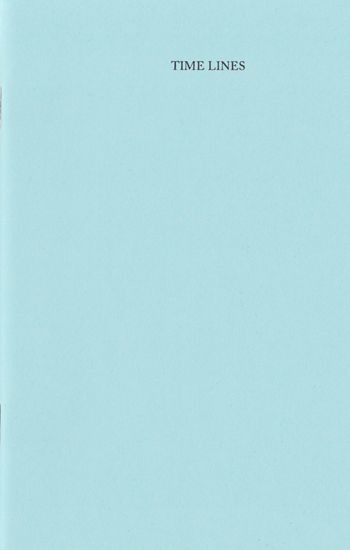

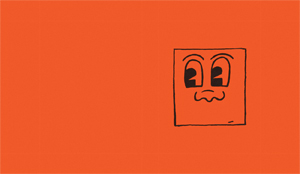
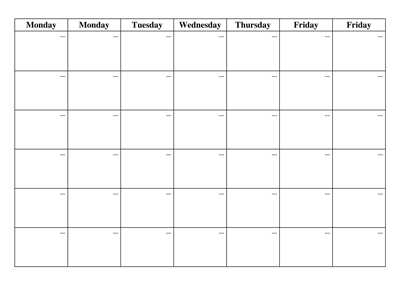
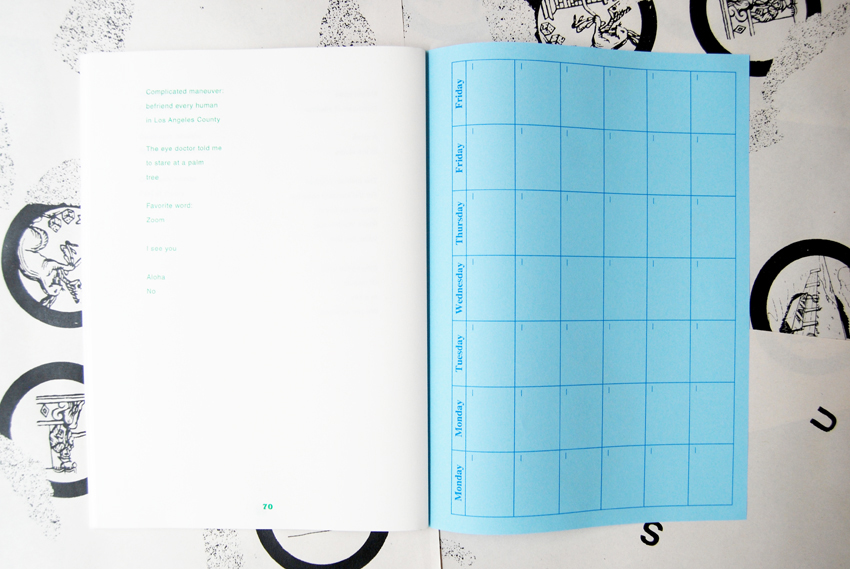



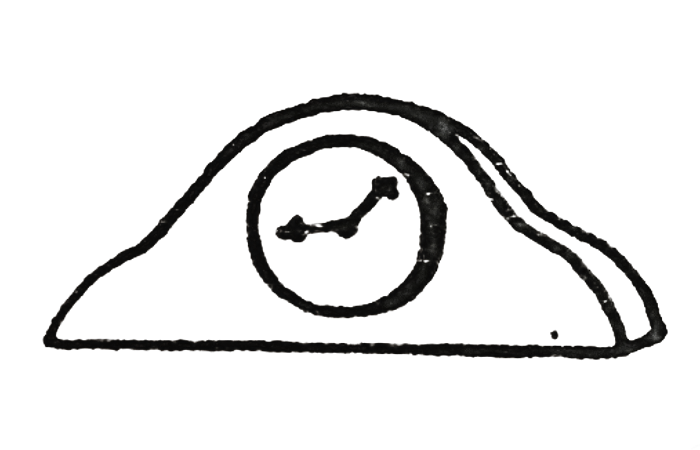

![]()

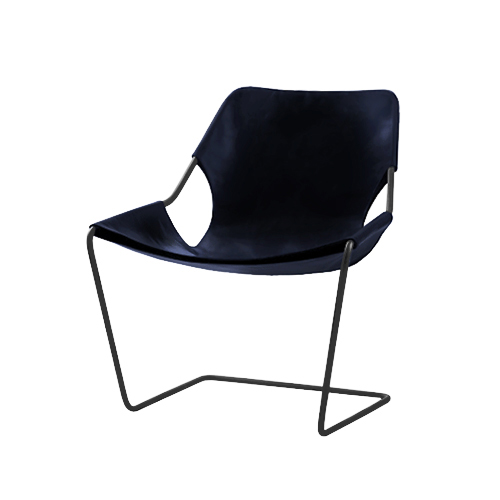
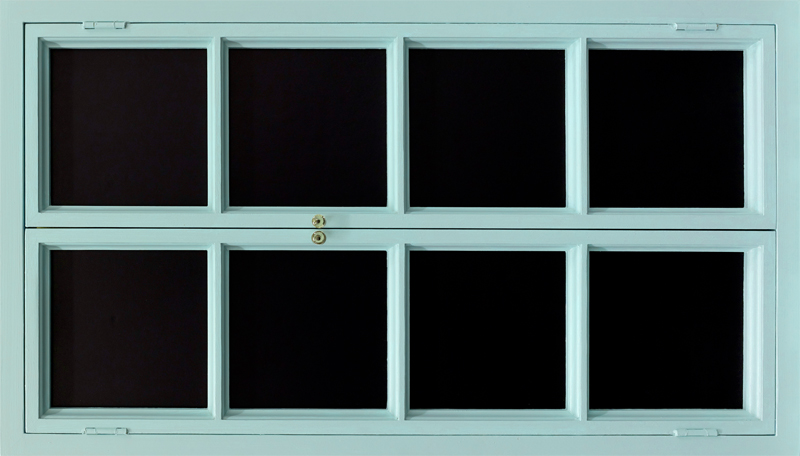
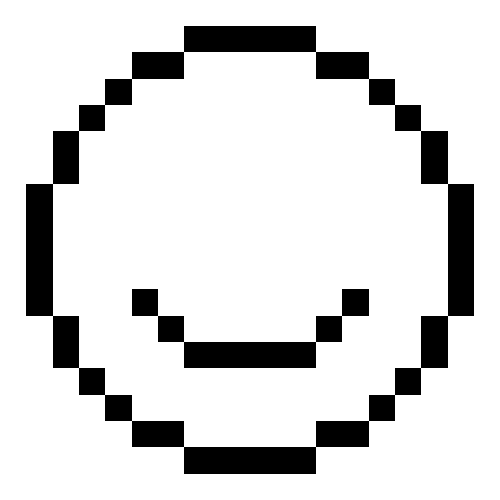
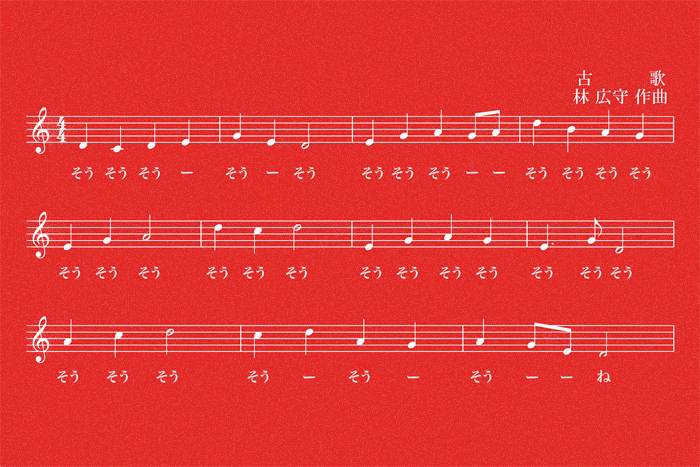
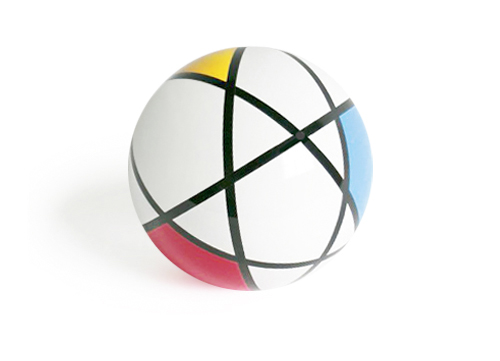
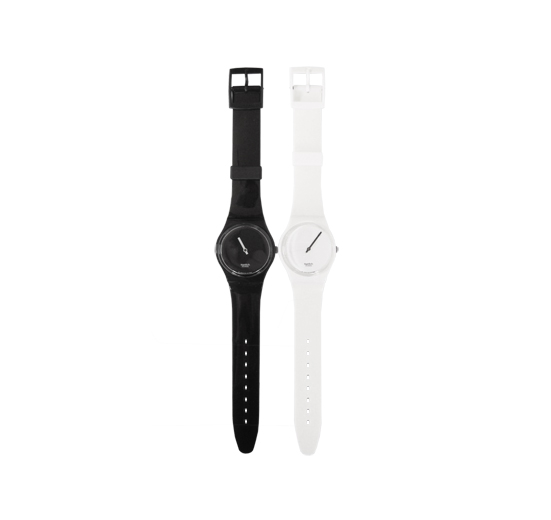







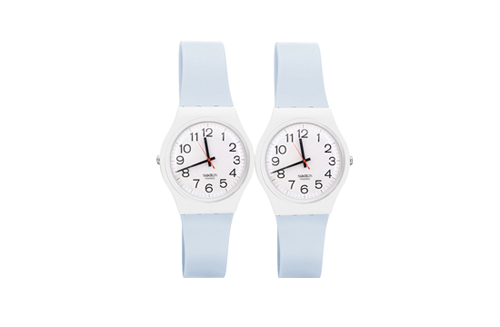
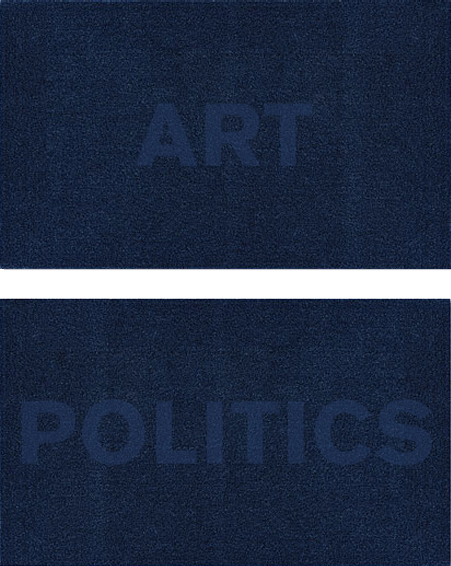
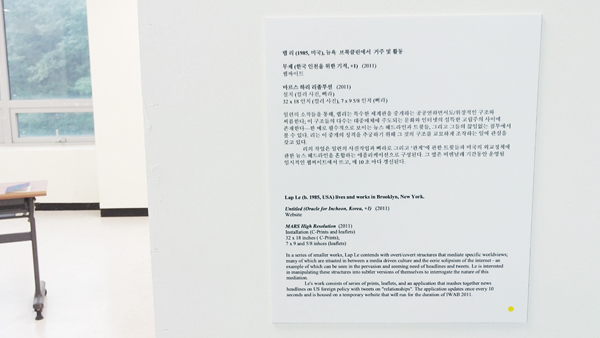
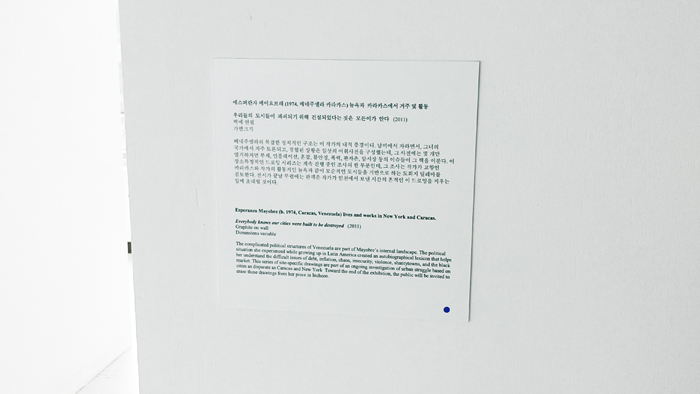
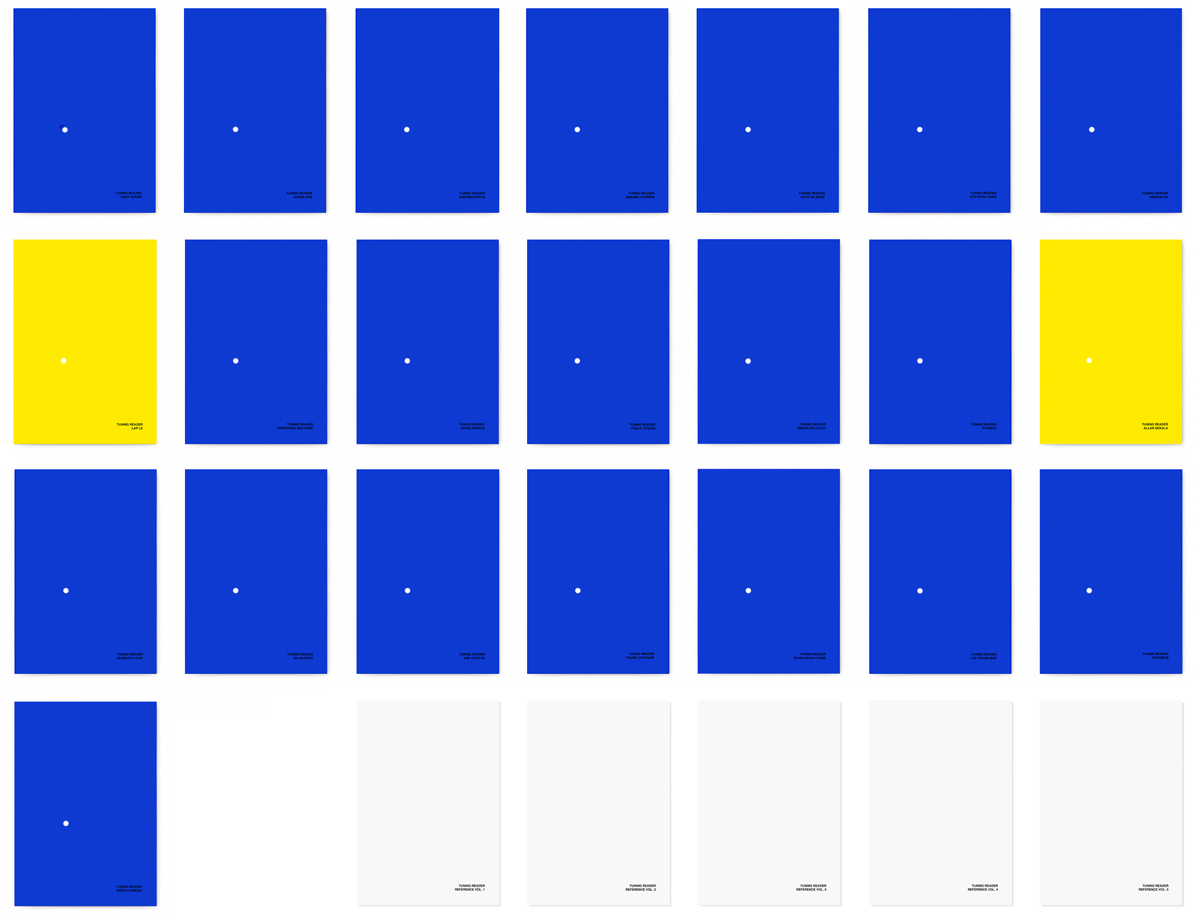
![]()
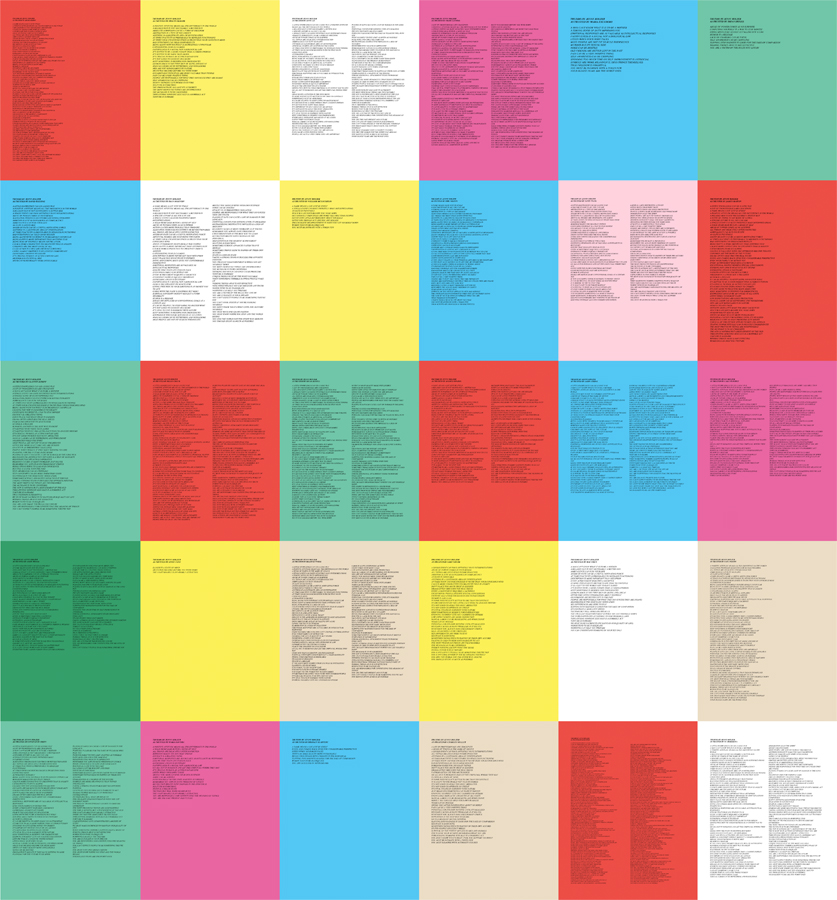
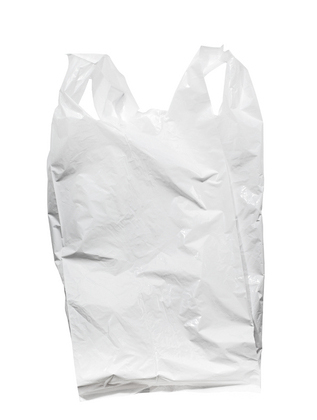
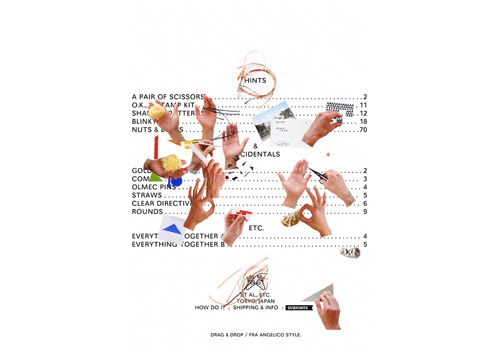

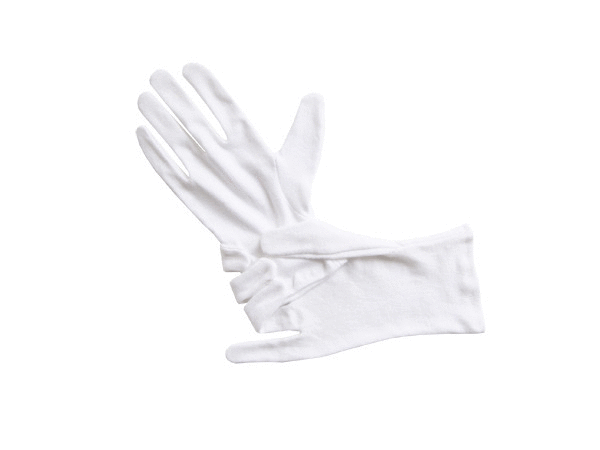

 white
white